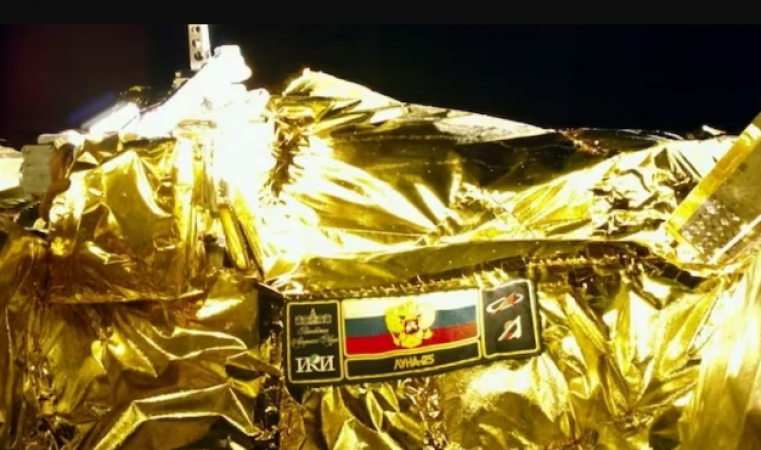
Moscow: Russia's ambitious Luna-25 mission, aimed at achieving a soft landing on the moon and deploying a robotic rover, suffered a significant setback on Monday as the spacecraft crashed into the lunar surface, unable to realize its intended objectives.
Having been launched from the Baikonur Cosmodrome in Kazakhstan on July 22, expectations were high for Luna-25 to accomplish a successful lunar landing by September 1. However, a disheartening turn of events transpired when the spacecraft lost contact with mission control shortly before its anticipated rendezvous with the moon.
Roscosmos, Russia's esteemed space agency, is actively engaged in investigating the root causes behind this unfortunate outcome. Initial assessments suggest potential damage inflicted upon the spacecraft either during its launch phase or throughout its journey to the moon.
Also Read: Future-Proofing Cybersecurity: 10 New Products from Black Hat Conference
Luna-25 represented the inaugural mission in a series of lunar endeavors planned by Roscosmos. The upcoming venture, Luna-26, slated for launch in 2024, holds the promise of subsequent progress.
This incident underscores a considerable setback for Russia's space program, which has encountered challenges and hurdles over recent years. The program has been beset by delays, budget overruns, and increasing competition from other spacefaring nations such as China and the United States.
Also Read: Understanding the Impact of the Microsoft Exchange Online Security Breach
Furthermore, the mishap raises pertinent concerns regarding Russia's capacity to execute safe moon landings. The nation's previous successful lunar landing occurred in 1976, rendering Luna-25's failure an alarming reminder of the difficulties inherent in space exploration.
Nonetheless, Roscosmos remains steadfast in its commitment to the lunar program's continuation. The agency is steadfast in its plans to launch Luna-26 next year, signaling a resolve to persevere despite the recent setback. However, the implications of Luna-25's misfortune cast shadows over the feasibility of Russia achieving its ambitious objectives in the realm of space exploration.
Additional Insight into the Luna-25 Mission:
In light of the Luna-25 mishap, the realm of space exploration once again stands as a testament to the daunting complexities inherent in pushing the boundaries of human ingenuity.
While the setback is undoubtedly disappointing, it serves as a stark reminder of the challenges that accompany such ambitious ventures.
Also Read: Unveiling the Bold Design of Maruti Suzuki's Brezza Pickup Truck
The human spirit's resilience will inevitably drive Russia to draw valuable lessons from this setback and propel it forward in its unrelenting pursuit of space exploration achievements.